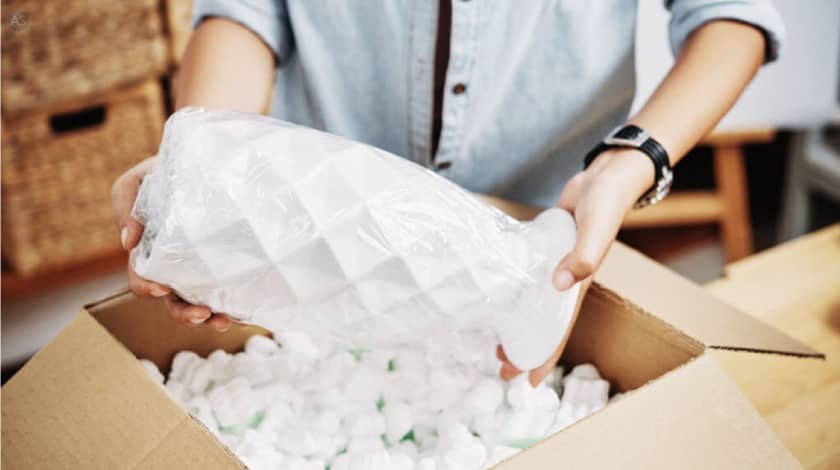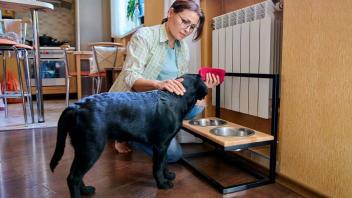Tips for Packing Fragile and Valuable Items

Packing fragile and valuable items can be a daunting task when moving. However, with the right techniques and materials, you can ensure that your belongings arrive at your destination intact. In this blog, we will discuss several tips to help you pack fragile and valuable items effectively.
#1 Use the Right Packing Materials
Using the right packing materials is essential to protect your fragile items. Invest in high-quality packing supplies such as bubble wrap, packing paper, foam peanuts, and sturdy boxes. For added protection, consider using specialized boxes such as dish packs or glass packs for breakable items like glassware and dishes.
Common Mistakes: Some people try to save money by using low-quality or makeshift packing materials, which can result in damaged items.
How to Do It Properly: Invest in types of packing materials like bubble wrap, packing paper, and sturdy boxes. For delicate items, consider using specialty boxes or cushioned dividers.
#2 Declutter Your Home
Decluttering helps you identify which items are worth packing and moving, saving you time and effort during the packing process. Decluttering your home before packing and moving has multiple benefits. It helps you identify and prioritize the items you truly need, reducing the number of items to be packed and transported. This not only saves time, effort, and packing materials, but also lowers transportation costs, as you'll require less space in the moving truck.
Moreover, decluttering simplifies the unpacking process, allowing you to set up your new home more quickly and efficiently. Additionally, it presents an opportunity to donate or sell items you no longer need, potentially generating extra funds to cover moving expenses.
Common Mistakes: People often overlook decluttering, resulting in unnecessary items being packed and moved.
How to Do It Properly: Separate items you no longer need and donate, sell, or dispose of them responsibly.
#3 Carefully Wrap Each Item
Properly wrapping fragile items provides an additional layer of protection during the move. Properly wrapping each fragile and valuable item is crucial for ensuring their safety during transportation. By taking the time to wrap items carefully, you significantly reduce the risk of damage caused by impacts, vibrations, or shifting within the moving truck.
Proper wrapping also helps protect items from dust, moisture, and other environmental factors that may cause damage during the move. Investing time and effort in carefully wrapping your fragile and valuable belongings can save you the financial and emotional costs associated with replacing or repairing damaged items. Moreover, it provides you with peace of mind, knowing that your cherished possessions are well-protected throughout the relocation process.
Common Mistakes: Rushing through the wrapping process or using insufficient wrapping material, leading to inadequate protection.
How to Do It Properly: Use enough layers of bubble wrap or packing paper, and ensure each item is completely covered.
#4 Use the Right Boxes
Choosing the right box size and type is crucial for the safety of your fragile items during transport. Choosing the right boxes for packing your fragile and valuable items is essential for their protection during the move.
Using boxes that are too big, too small, or not sturdy enough can lead to damage, as items may shift or even collapse within the box. Properly-sized boxes ensure that your belongings are snugly and securely packed, reducing movement during transportation and minimizing the risk of damage.
Common Mistakes: Using boxes that are too large or flimsy, which can result in items shifting or getting crushed.
How to Do It Properly: Select sturdy boxes of appropriate sizes for your fragile items. For added protection, use specialty boxes with dividers or cushioning.
Also read: Tips on how to lift heavy boxes properly
#5 Don't Overpack Boxes
Overpacking boxes can lead to damage as items shift or the box collapses during transport. It may be tempting to pack as many items as possible into a single box to save space and reduce the number of boxes needed for the move.
However, overpacking boxes can lead to several problems that may ultimately cause damage to your fragile and valuable items. When boxes are overpacked, they can become too heavy to handle safely, increasing the risk of dropping or mishandling them during the move.
Additionally, the extra weight can strain the box's structural integrity, causing it to buckle or tear, compromising the protection it offers to the items inside.
Common Mistakes: Ignoring the box's weight limit or cramming too many items into a single box.
How to Do It Properly: When packing, distribute fragile items evenly across multiple boxes. Ensure boxes are not too heavy and can be lifted safely.
#6 Label Boxes Clearly
Clear labeling helps you and your movers know which boxes contain fragile items, reducing the risk of damage. Properly labeling your boxes is an essential step in ensuring the safety of your fragile and valuable items during a move.
Clear and accurate labels not only help you and your movers identify the contents of each box, but they also provide essential information on how the box should be handled and where it should be placed in your new home.
Common Mistakes: Not labeling boxes or using unclear labels, resulting in mishandling during the move.
How to Do It Properly: Use a labeling system to indicate fragile contents and any specific handling instructions. Make sure the labels are visible and easy to read.
#7 Avoid Stacking Fragile Items
Stacking fragile items can lead to damage from the weight and pressure of other items on top. When packing and transporting fragile and valuable items, it's essential to avoid stacking them on top of each other or placing heavy items on top of them.
Inappropriately stacking fragile items can result in pressure or impact damage during the move, which may lead to broken or shattered belongings.
Common Mistakes: Placing heavy items on top of boxes containing fragile items or stacking fragile items without proper support.
How to Do It Properly: When loading your moving truck or arranging boxes in your home, avoid stacking fragile items. If you must stack boxes, place the heavier ones at the bottom and lighter, more fragile ones on top.
#8 Consider Hiring Professional Packers and Movers
Professional packers and movers have the expertise and equipment to handle fragile items properly, reducing the risk of damage. When it comes to packing and moving fragile and valuable items, hiring professional packers and movers can make a significant difference in ensuring the safety and protection of your belongings. These experts have extensive experience and training in handling delicate items, which means they know the best techniques and methods to pack, load, and transport them without causing damage.
Common Mistakes: Choosing to handle fragile items yourself without the necessary skills or experience, or hiring unqualified or fraudulent movers.
How to Do It Properly: Research and verify packers and movers qualifications before hiring them. Check reviews and compare quotes to make an informed decision. For more information on how packers and movers can help, visit this page.
#9 Insure Your Valuable Items
Insuring your valuable items provides financial protection in case of damage or loss during the move. Insuring your valuable items is a crucial aspect of the moving process, as it offers an additional layer of protection and peace of mind. No matter how carefully you pack and transport your fragile belongings, accidents can happen, and items can get damaged during transit. Having insurance coverage in place ensures that you are financially protected in the event of any loss or damage to your valuables.
Common Mistakes: Not considering insurance or selecting inadequate coverage, which can leave you financially vulnerable.
How to Do It Properly: Discuss insurance options with your chosen moving company, and make sure to understand the home relocation insurance terms and conditions. Consider purchasing additional coverage for high-value items if necessary.
#10 Unpack Carefully
Unpacking fragile items carefully helps to prevent damage after the move. Unpacking fragile and valuable items carefully is just as important as the packing process. It ensures that your delicate belongings remain intact and undamaged even after they've reached their destination. Proper unpacking techniques will help you avoid accidents or damage that could occur while removing items from their packaging.
Common Mistakes: Rushing through the unpacking process or not handling items with care, resulting in damage.
How to Do It Properly: Handle fragile items gently and remove packing materials with care.
Conclusion
Packing fragile and valuable items requires extra attention and care to ensure their safety during the moving process. By following these essential tips, such as using the right packing materials, properly wrapping each item, labeling boxes clearly, and considering professional help, you can significantly reduce the risk of damage to your delicate belongings.
Additionally, insuring your valuable items and unpacking carefully will further protect your possessions and provide peace of mind. With proper planning and execution, you can make your move a stress-free experience and enjoy your valuable items in their new home.











